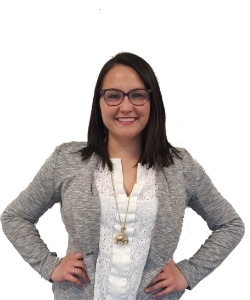
Take it or leave it: lessons learned about strategic planning during a global pandemic
Innovative Leadership | Strategic Planning | Return Planning
More than a year ago, I - like many others - was hunkering down for what I thought would be a two-week quarantine. Thirteen months later, I have found myself adapting to my circumstances. I have created a comfortable work-from-home space, embraced many home DIY projects. I’ve started a herb garden, purchased a inflatable baby pool (I don’t have a baby) and I have had enough time to get in and out of shape...multiple times. I have learned a whole lot about things I never questioned before “the great pause.” For instance, my perception of time is completely arbitrary: some days seem never-ending while in others, 24 hours do not feel like enough. I’ve also rediscovered the magic of a full-night’s sleep and what a blessing and privilege it is to have my health. There are some things I plan to forever eliminate from my life (I’m looking at you, non-stretchy jeans) and some things I hope to incorporate in the next phase of life (hello, neighborhood walks).
I am also seeing many district partners grapple with the tensions of identifying what we want to take with us and leave behind in our next phase.
I’m noticing many leaders are yearning for a break: from reactivity, to so many changes, to creating reflective space to zoom out and forge a path forward. This has led many to consider reengaging in strategic planning. While I do think this is a good time to think about developing a strategic direction with your organization, I’d like to offer some concepts and ideas of what you might consider taking forward and some things you might want to leave behind!
Take it: Ongoing “micro” communication
Leave it: Waiting to share information until it’s fully built out
With fluctuating infection rates, changing federal and local mandates, and new knowledge of the virus, we had to remain flexible.
Leaders found themselves updating their communities daily through multiple modalities to announce schedule adjustments or complete contract tracing. We became very comfortable with acting on the information that was available - with the understanding that things might change - rather than waiting for the whole picture; the circumstances demanded it. As a result, communities anticipated that information would change and they remained engaged to ensure they were in the loop.
Looking ahead, school and district leaders should consider building on this culture of “micro” communication through social media, automated texts and the organization’s website. Engaging stakeholders does not always have to be a scientific process, we may benefit from more organic communication and relationship building.
Consider: Which communication strategies worked for my community? How might we keep that momentum going?
Take it: Adaptive teaming
Leave it: Building duplicative committees or making them too large
Very few of the challenges we faced as a result of the pandemic were in anyone’s job descriptions.
What we saw over the year was people getting stuff done. Folks did whatever it took to ensure students were safe, fed and even learning. People leveraged their strengths and leaned on their colleagues to create solutions to unprecedented challenges.
At Education Elements we subscribe to Anthony Kim and Alexis Gonzalez- Black’s approach to managing roles: Define the work before you define the people. (To learn from leaders like you, check out our series on Leading Through Crisis: Roles and Responsibilities in Schools: Leading Through Crisis). This helps to ensure that you are not limited by titles; in fact, you are more likely to leverage your colleagues in projects based on their skills, interests, and strengths, creating momentum to move the organization forward.
Over the past year, we had to simply “get to it.” We saw many leaders forgo committee meetings for a more expedient “dividing and conquering” mentality. With strong communication and heightened trust, teams can be more nimble as circumstances change.
Consider: What are your team’s unique strengths and how can you match their strengths with solving the challenges your district is facing?
Take it: Planning in short cycles or “sprints”
Leave it: Building out a detailed plan that may be irrelevant quickly
Last summer we worked with countless leaders to plan for “return to school” after a disruptive spring. It was impossible to plan for the entire school year, let alone the next five. Instead, we planned for what we could foresee. In May of 2020 that meant planning for summer and the first two months of school. As the fog cleared on the school year we were able to regroup and plan for the subsequent months.
There is a time and place for long-term plans but there is also a huge value in planning to pivot, or as Alexis and Anthony say “Plan for change, not perfection.” When we expect change, we become less attached to the plan going exactly as we want it to be, and we become more resilient to changes. This is why we encourage sprint planning. Sprint planning is a product development strategy that we have found effective in strategy work where you set goals, metrics and actions steps for a short period of time (between 3-4 weeks). Setting smaller goals helps teams take the best next steps and ultimately make progress on a larger goal. In the past 12 months, we have seen folks successfully experiment, take risks and adapt when there is a smaller timeline and clear milestone markers.
Consider: Which projects can benefit from short planning sprints?
Take it: Focus on equity and justice
Leave it: Assuming issues of marginalized communities are not relevant
Systemic racism and oppression are not new, but this year they became part of a growing national and international awareness. It is not possible to ask students, educators and leaders to leave their identities and lived experiences outside of the school walls. Consider engaging historically marginalized groups to share their perspectives to shape your ongoing district strategy. For ideas on how to do this check out our resources:
Consider: Asking people who have different perspective than yours:
-
- How does your identity impact your experience in school?
- What does belonging look like for you?
- How can the school system help you reach your fullest potential?
We have all learned so much from “The Great Pause.” What lesson has forever changed you? What will you take with you moving forward?
About Andrea Goetchius
Andrea Goetchius is an Associate Partner at Education Elements, working with schools and districts to best meet the needs of all learners. Andrea enjoys collaborating with and connecting clients across the country to leverage a community of innovation as schools embark on a personalized learning path. Andrea began her career as a Special Education Teacher in Glendale, Arizona. During her time in the classroom, she coached and supported student teachers and led staff development. Andrea then worked for Teach For America as a Manager of Teacher Leadership Development where she coached and supported teachers to match their strengths and skills with the needs of their students. She has coached in pre-school to twelfth-grade classrooms with a focus on implementing Culturally Responsive Pedagogy in the classroom. In her current role, Andrea specializes in projects that bring personalized learning to scale across districts, regional centers, and state entities. She is passionate about the development of innovative leaders.


